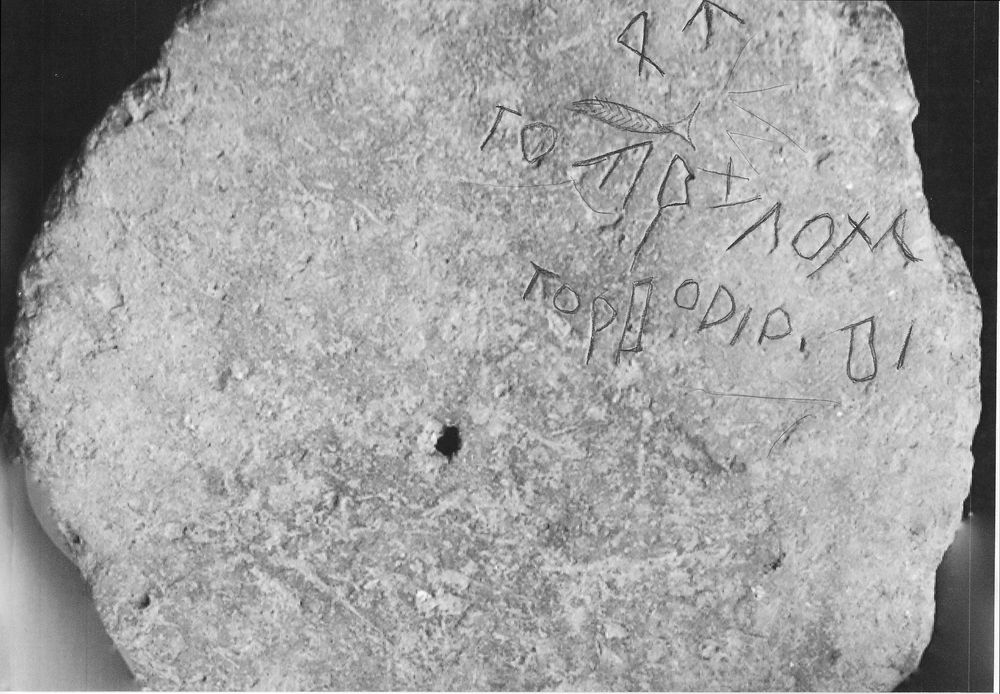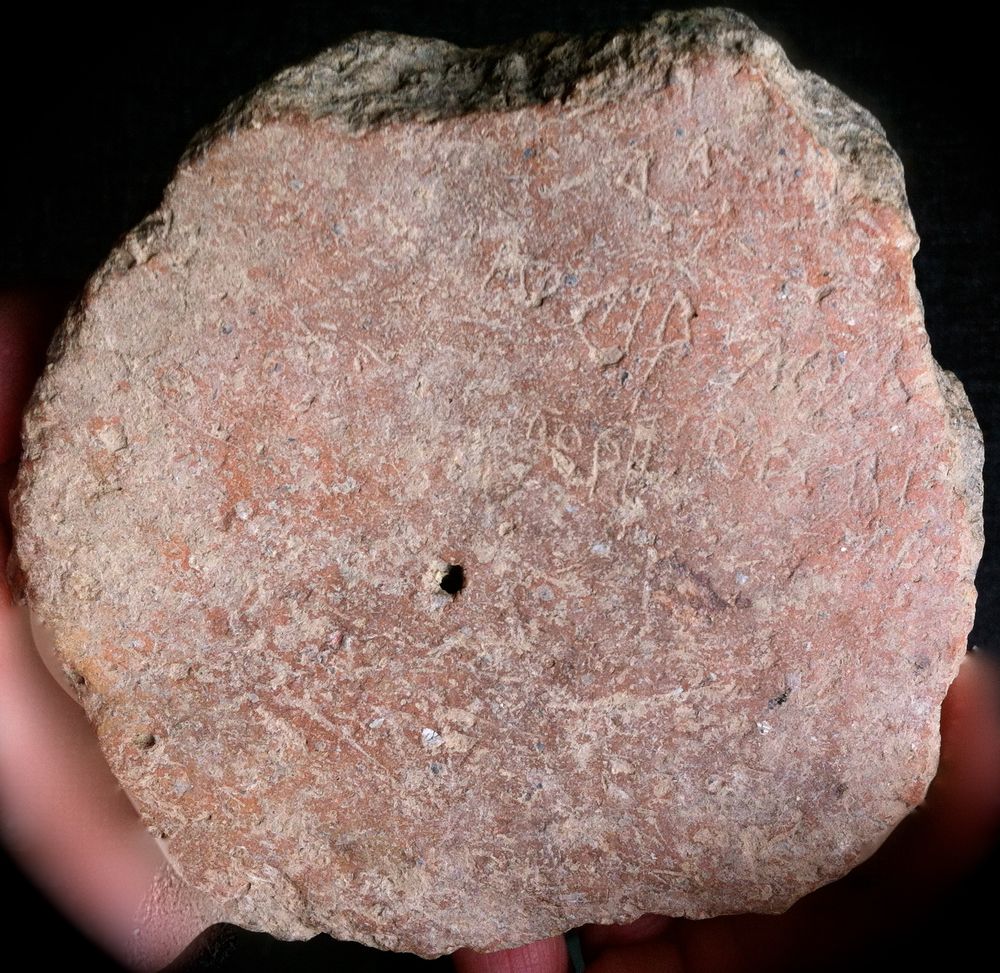EpiDoc XML:
IGCyr1181002
Trismegistos ID:
738729
Source description
Support: Fragmentary flat tile of non-local pink-coated, grey inside, micacious clay, broken out on all sides, (w: 0.12 × h: 0.12 × d: 0.01).
Layout: Scratched on one face in three lines, line 1 ascending in comparison with ll. 2-3; a small figure of fish is cut between ll. 1 and 2; many other light strokes are visible on the surface.
Letters: 0.008-0.015; line 2 and 3 at least are dextroverse; irregular letters, some of which are difficult to interpret; alpha with vertical central bar, delta almost D-shaped, closed eta without central bar, perhaps one unclear koppa; unclear letters at line 1 (see commentary).
Date: Prior to the settlement of 631 BC (context, lettering).
Findspot: Found by M. Luni in 2012 at Cyrene ➚: on the native rock beneath the temple of the Dioscuri on the Acropolis ridge (once said 'tempio ipetrale').
Place of origin: Findspot.
Last recorded location: Studied by C. Dobias-Lalou in october 2012.
Text constituted from: Transcription from object (CDL).
Bibliography
Dobias-Lalou 2014; IGCyr 118100 ➚. Cf. Dobias-Lalou 2015; Dobias-Lalou 2013-2014, p. 185; , p. 165; Rosamilia 2023, pp. 30-31, footnote 7.
Text
Apparatus
1: ++: | ΓΧ Dobias-Lalou 2014; | γχ´ Dobias-Lalou 2014 ?
2: τ̣ο̃: ΙΟ Dobias-Lalou 2014 || τ̣ο̃ Ἀρχιλόχọ̄ from Marengo's suggestion: αϙ̣+λοχο̣ Dobias-Lalou 2014
3: ΗΙ: ηι´ Dobias-Lalou 2014 ?
French translation
------ D'Arkhilokhos [..?] de Rhodios: ++.
English translation
------ Of Archilochos [..?] of Rhodios: ++.
Italian translation
------ Di Archilochos [..?] di Rhodios: ++.
Commentary
Both the intrinsic features and the archaeological context of this fragmentary tile show that it was brought from abroad and inscribed by a foreigner, either abroad or in Libya. Deciphering and interpreting the graffito remains a challenge.
L. 1: the character at right might be the special Cyrenaican gamma also known from IGCyr0001002. If so the script would be sinistroverse. The second character resembles a hour-glass character without its lower part. It might stand for chi (as once in Laconia) or ksi (at Knidos). As no word might be read with such consonants, an alternative would be either number 1003, which would be surprising both for the chronology of alphabetic glyphs as numbers and for the high amount resulting or 63, with again the first mentioned oddity. Eventually, an interpretation with Cypriot syllabograms, also mentioned in editio princeps, to be read ro-ti, i.e. Ῥhοδί- is no more convincing.
L. 2: C. Dobias-Lalou is now convinced by S.M. Marengo's reading of the personal name Archilochos: the 4th character should be a rho rather than a koppa and the multiple strokes that follow it may be read as a chi and an iota obliquely inserted above the main line.
At line 3 Ῥόδιος was taken erroneously in the editio princeps and in IGCyr as an ethnic, which did not yet exist at the time of our inscription, as pointed out by . It should rather be a personal name. Whether it is Archilochos' father's name remains unclear, as we do not know the extent of the lacuna at right.
On the implication of an early Rhodian participation into the foundation and its echo in the script, see also Rosamilia 2023.
CC BY-NC-SA 4.0 Deed Attribution-NonCommercial-ShareAlike 4.0 International License.
All citation, reuse or distribution of this work must contain a link back to DOI: https://doi.org/10.60760/unibo/igcyrgvcyr2 and the filename (IGCyr000000 or GVCyr000), as well as the year of consultation.


